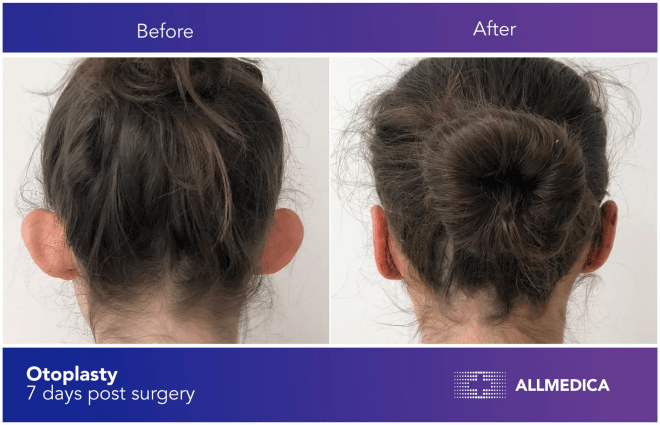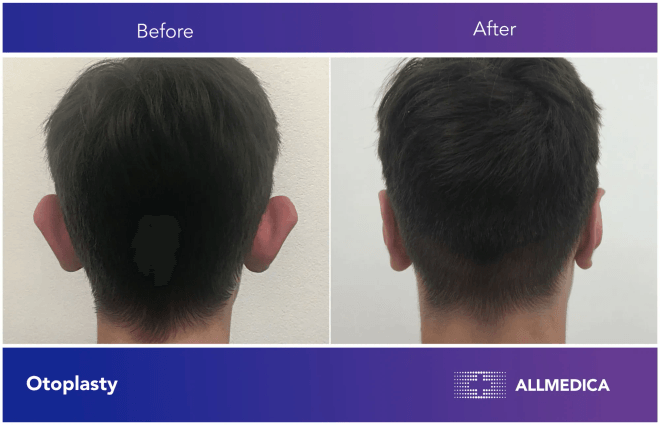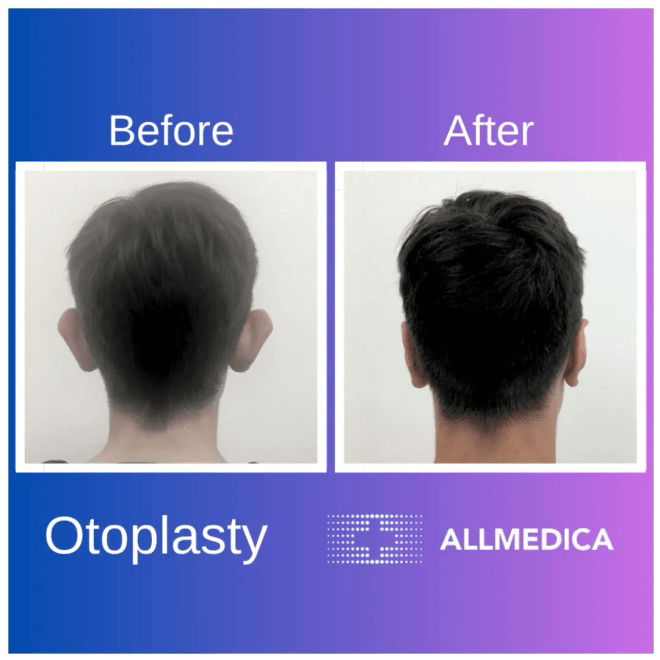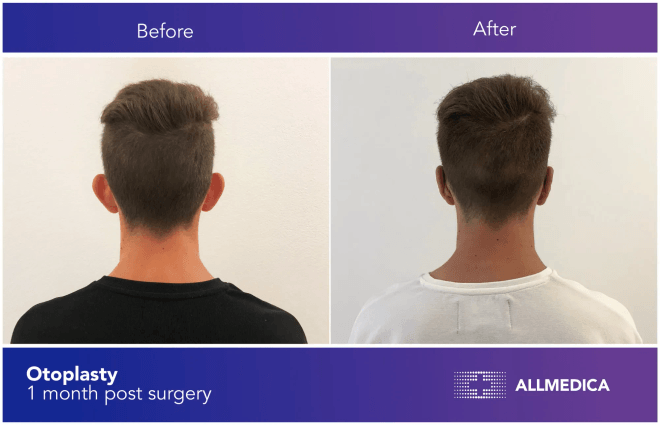

Otoplasty
Otoplasty Surgery (Ear Surgery)
Otoplasty, also known as ear surgery, is a procedure that reshapes or repositions the ears to improve their appearance and proportion. This surgery can help if you feel your ears stick out too much or if they have an unusual shape.
What Can Otoplasty Do:
- Reshape Ears: Adjust the shape of your ears for a more natural look.
- Reposition Ears: Move the ears closer to the head if they stick out too far.
- Improve Symmetry: Make your ears look more even and balanced.
What Happens During Otoplasty:
- Consultation: You'll meet with a surgeon to discuss your goals and learn what the surgery involves.
- Anesthesia: The procedure most of the time is done under local anesthesia (numbing the area).
- Surgery: The surgeon will make small incisions behind your ears to reshape or reposition them. The incisions are usually hidden, so scars are minimal.
Recovery:
- Initial Healing: You'll experience some swelling and bruising around your ears for a few days. You will need to wear a headband to protect your ears.
- Return to Activities: Most people can return to work and regular activities within a week. Avoid strenuous activities for a few weeks.
Benefits of Otoplasty:
- Boost Confidence: You may feel more confident with your ears reshaped.
- Permanent Results: The changes from otoplasty are long-lasting.
- Minimal Scarring: Incisions are hidden behind the ears, so scars are not easily visible.
Otoplasty can give you the ear shape you want and improve how you feel about your appearance.
Here is a typical schedule for your Otoplasty Surgery – less than 48 hours:
- Day 1: Arrive late afternoon and spend the night in a hotel.
- Day 2: Attend pre-operation consultations and tests. Undergo the gastric balloon procedure. Get discharged from the clinic. Spend the night in the hotel.
- Day 3: Return home – morning flight.
Please note: The information provided on this website is for informational purposes only. Patients should understand that individual results may vary and should not expect identical outcomes to those depicted on this website. Each patient's experience is unique and influenced by factors such as their specific condition, lifestyle, and post-surgery care. It's important to consult with a healthcare professional to understand the potential outcomes and considerations specific to your situation.













